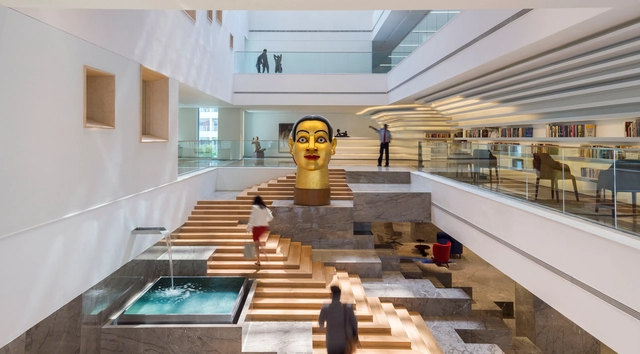
-
Architects: Abin Design Studio
- Area: 410 m²
- Year: 2023
-
Professionals: SPA Consultants, Aesthetik, Abin Design Studio



Cities are the bedrock of civilization. For millennia, they have attracted people with the promise of superior standards of living — from better economic and educational opportunities to easier access to quality public infrastructure such as housing, healthcare, and public transport. Today, however, many cities around the world are finding it challenging to live up to this promise. With urban migration accelerating at a dizzying rate – the United Nations projects that over two-thirds of the world's population will live in cities or urban centers by 2050 – existing resources and services in cities are coming under increasing pressure, rendering them dysfunctional and leading to glaring inequities.
There is no singular way to define or assess liveability; every city has a unique set of characteristics, from its history, culture, geography, and demographics, to how it is governed and what urban issues plague it. Therefore, improving liveability requires concerted efforts from multiple stakeholders including people, governments, and experts, to identify critical problem areas and opportunities, and devise contextual solutions. The TV show Tale of Two Cities, where Indian architect and urbanist Dikshu C. Kukreja sits down with global leaders, brings out great insights into what some major cities in the world are doing to create more liveable environments for their inhabitants. Here we present five examples: from Bogotá, Kolkata, Hannover, Tirana, and Washington, D.C.







The door: despite being one of the most fundamental architectural elements, the immense significance these portals hold in architecture and culture can hardly be questioned. Historically, empires erected gigantic gateways to welcome visitors and religious shrines installed doors with ornate embellishments to ward off evil just as contemporary governments have built arches to commemorate important events.
In this photo-series, however, architect Priyanshi Singhal directs her focus to doors in a humbler vein—those of homes and hole-in-the-wall shops. Armed with her camera, she travels through narrow winding streets in age-old Indian towns and villages—characterized by their mixed land-use—as she studies and documents the inherent relationship between architectural tradition, culture, and a people. A door and its chaukhat (threshold) hold deep spiritual meaning in India’s traditional vastu shastra system of architecture. Furthermore, Singhal’s work provides us a brief glimpse of the imprint that the vagaries of time, community and economy have left on India’s historical urban fabric.

Design Forum International has unveiled Dakshineswar Sky Walk, a 380-meter long pedestrian intervention designed to improve traffic and movement leading to the Dakshineswar Kali temple in Kolkata, India.
Located on the banks of the Ganges River at the northern tip of the city, the Dakshineswar Kali temple is one “of the most revered places of worship in Hinduism, the seat of divine female power, Shakti,” and draws in a large number of devotees year-round. Because of its popularity, the roads leading to the site have become congested due to increased vehicle traffic, foot traffic, and the appearance of small shops and kiosks.
Taking these existing conditions into account, Dakshineswar Sky Walk aims to become a dynamic solution to the site’s problems. At 10.5 meters wide, the skywalk will connect a nearby traffic rotary with the gates of the temple compound, with 12 escalators, four elevators, and eight staircases to allow users to embark and disembark.